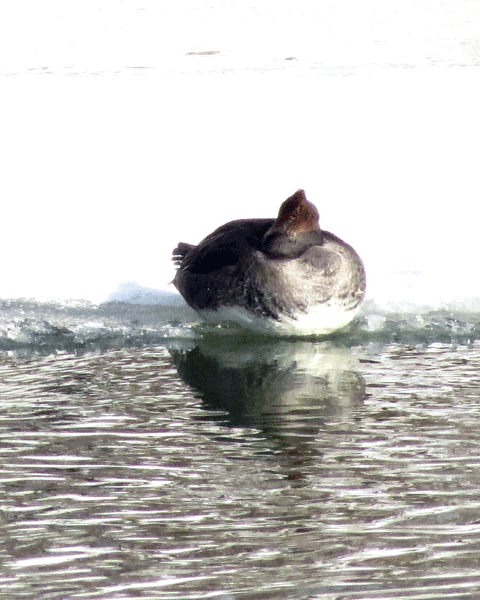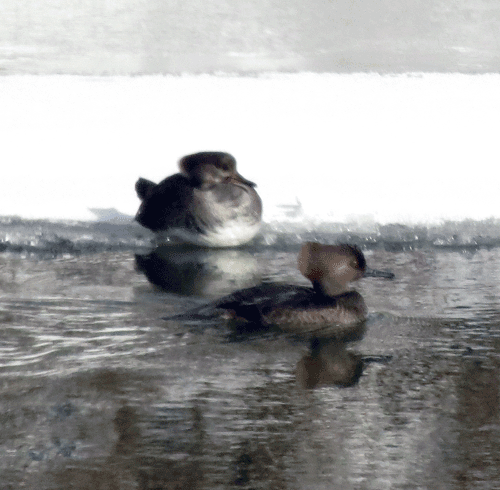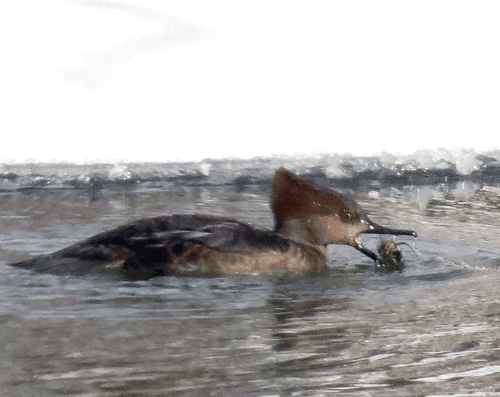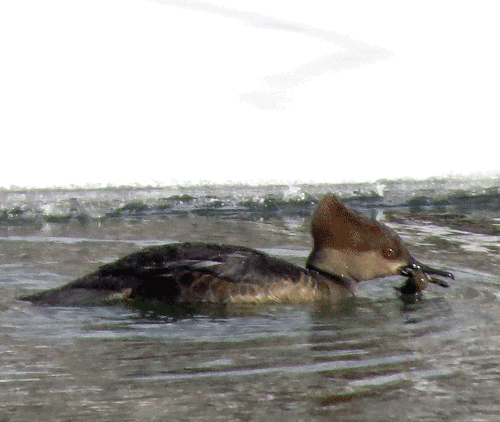Today, I spent some time watching two female Hooded Mergansers along the Winooski River. One was sitting on the ice shelf while the other was fishing in the river with chunks of ice passing by. The air temperature was about 10 degrees F and even though I was sitting in the truck, shooting out the window, it looked cold. I kept wondering about the merg on the ice, just huddled there all puffed up and tucked in. Here’s what she looked like:
When I got home, I happened across a Facebook post by an author, Mary Holland, whose work I really like. I wrote about her book, Naturally Curious, last Fall. Here’s what she wrote:
On a cold, winter day, why would any bird choose to sit down on ice? While feathers are excellent insulators, the legs and feet of most birds lack this protective covering. Because of this, legs and feet are a major source of heat loss for birds. Physical adaptations to this loss of heat include constricted blood vessels in a bird’s feet, as well as the proximity of arteries and veins to each other which aids the transfer of heat. Birds exhibit behavioral adaptations as well, such as ducks and gulls standing on one leg and tucking the other among breast feathers, reducing by half the amount of unfeathered limb surface area exposed. By sitting down and covering both legs, even on ice, heat loss from limbs is minimized. If you observe closely, you will see many of the ground-feeding finches such as sparrows and redpolls also occasionally drop down and cover their legs and feet with their breast feathers for a few seconds.
So, I got my answer pretty fast. Meanwhile, here’s a couple of shots of the exercising merganser fishing successfully. I didn’t see her share it!
If you enjoyed this post, please consider leaving a comment and subscribing by RSS feed or via email to have future articles delivered to you.





Great shots Dick. I can never get the mergs in focus because they swim away so fast. Check out Jamie’s bluebird and nuthatch on facebook yesterday. Judith